The disordered N-terminal domain of DNMT3A recognizes H2AK119ub and is required for postnatal development
- PMID: 35534561
- PMCID: PMC9295050
- DOI: 10.1038/s41588-022-01063-6
The disordered N-terminal domain of DNMT3A recognizes H2AK119ub and is required for postnatal development
Abstract
DNA methyltransferase 3a (DNMT3A) plays a crucial role during mammalian development. Two isoforms of DNMT3A are differentially expressed from stem cells to somatic tissues, but their individual functions remain largely uncharacterized. Here we report that the long isoform DNMT3A1, but not the short DNMT3A2, is essential for mouse postnatal development. DNMT3A1 binds to and regulates bivalent neurodevelopmental genes in the brain. Strikingly, Dnmt3a1 knockout perinatal lethality could be partially rescued by DNMT3A1 restoration in the nervous system. We further show that the intrinsically disordered N terminus of DNMT3A1 is required for normal development and DNA methylation at DNMT3A1-enriched regions. Mechanistically, a ubiquitin-interacting motif embedded in a putative α-helix within the N terminus binds to mono-ubiquitinated histone H2AK119, probably mediating recruitment of DNMT3A1 to Polycomb-regulated regions. These data demonstrate an isoform-specific role for DNMT3A1 in mouse postnatal development and reveal the N terminus as a necessary regulatory domain for DNMT3A1 chromatin occupancy and functions in the nervous system.
© 2022. The Author(s), under exclusive licence to Springer Nature America, Inc.
Conflict of interest statement
Competing interests
The authors declare no competing interests.
Figures
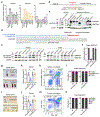
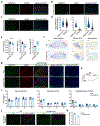
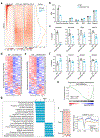
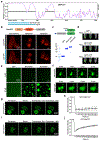
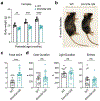
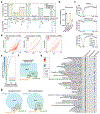

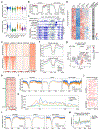


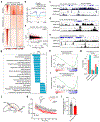


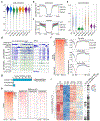


Comment in
-
DNMT3A binds ubiquitinated histones to regulate bivalent genes.Nat Genet. 2022 May;54(5):537-538. doi: 10.1038/s41588-022-01073-4. Nat Genet. 2022. PMID: 35534560 Free PMC article.
Similar articles
-
Cancer-associated DNA hypermethylation of Polycomb targets requires DNMT3A dual recognition of histone H2AK119 ubiquitination and the nucleosome acidic patch.Sci Adv. 2024 Aug 30;10(35):eadp0975. doi: 10.1126/sciadv.adp0975. Epub 2024 Aug 28. Sci Adv. 2024. PMID: 39196936 Free PMC article.
-
The N-terminal region of DNMT3A engages the nucleosome surface to aid chromatin recruitment.EMBO Rep. 2024 Dec;25(12):5743-5779. doi: 10.1038/s44319-024-00306-3. Epub 2024 Nov 11. EMBO Rep. 2024. PMID: 39528729 Free PMC article.
-
Cancer-associated DNA Hypermethylation of Polycomb Targets Requires DNMT3A Dual Recognition of Histone H2AK119 Ubiquitination and the Nucleosome Acidic Patch.bioRxiv [Preprint]. 2024 Mar 20:2024.03.18.585588. doi: 10.1101/2024.03.18.585588. bioRxiv. 2024. Update in: Sci Adv. 2024 Aug 30;10(35):eadp0975. doi: 10.1126/sciadv.adp0975. PMID: 38562823 Free PMC article. Updated. Preprint.
-
Neuronal DNA Methyltransferases: Epigenetic Mediators between Synaptic Activity and Gene Expression?Neuroscientist. 2018 Apr;24(2):171-185. doi: 10.1177/1073858417707457. Epub 2017 May 17. Neuroscientist. 2018. PMID: 28513272 Free PMC article. Review.
-
Epigenetic mechanisms in mammals.Cell Mol Life Sci. 2009 Feb;66(4):596-612. doi: 10.1007/s00018-008-8432-4. Cell Mol Life Sci. 2009. PMID: 18985277 Free PMC article. Review.
Cited by
-
Stability and DNA Methyltransferase Activity of DNMT3A are Maintained by Ubiquitin-Specific Peptidase 11 (USP11) and Sumoylation Countering Degradation.bioRxiv [Preprint]. 2025 Jun 27:2025.03.05.641683. doi: 10.1101/2025.03.05.641683. bioRxiv. 2025. PMID: 40161590 Free PMC article. Preprint.
-
Evolutionary and structural insights into DNMTs and TETs: decoding their functional heterogeneity and oncogenic roles in methylation regulation.BMC Mol Cell Biol. 2025 Aug 28;26(1):26. doi: 10.1186/s12860-025-00552-w. BMC Mol Cell Biol. 2025. PMID: 40877782 Free PMC article.
-
Crosstalk within and beyond the Polycomb repressive system.J Cell Biol. 2024 May 6;223(5):e202311021. doi: 10.1083/jcb.202311021. Epub 2024 Mar 20. J Cell Biol. 2024. PMID: 38506728 Free PMC article. Review.
-
Epigenetic regulators of clonal hematopoiesis control CD8 T cell stemness during immunotherapy.Science. 2024 Oct 11;386(6718):eadl4492. doi: 10.1126/science.adl4492. Epub 2024 Oct 11. Science. 2024. PMID: 39388542
-
Mechanisms of DNA Methylation Regulatory Function and Crosstalk with Histone Lysine Methylation.J Mol Biol. 2024 Apr 1;436(7):168394. doi: 10.1016/j.jmb.2023.168394. Epub 2023 Dec 12. J Mol Biol. 2024. PMID: 38092287 Free PMC article. Review.
References
-
- Smith ZD & Meissner A DNA methylation: Roles in mammalian development. Nat. Rev. Genet 14, 204–220 (2013). - PubMed
-
- Greenberg MVC & Bourc’his D The diverse roles of DNA methylation in mammalian development and disease. Nat. Rev. Mol. Cell Biol 20, 590–607 (2019). - PubMed
-
- Okano M, Bell DW, Haber DA & Li E DNA methyltransferases Dnmt3a and Dnmt3b are essential for de novo methylation and mammalian development. Cell 99, 247–257 (1999). - PubMed
-
- Nguyen S, Meletis K, Fu D, Jhaveri S & Jaenisch R Ablation of de novo DNA methyltransferase Dnmt3a in the nervous system leads to neuromuscular defects and shortened lifespan. Dev. Dyn 236, 1663–1676 (2007). - PubMed
Publication types
MeSH terms
Substances
Grants and funding
LinkOut - more resources
Full Text Sources
Molecular Biology Databases

